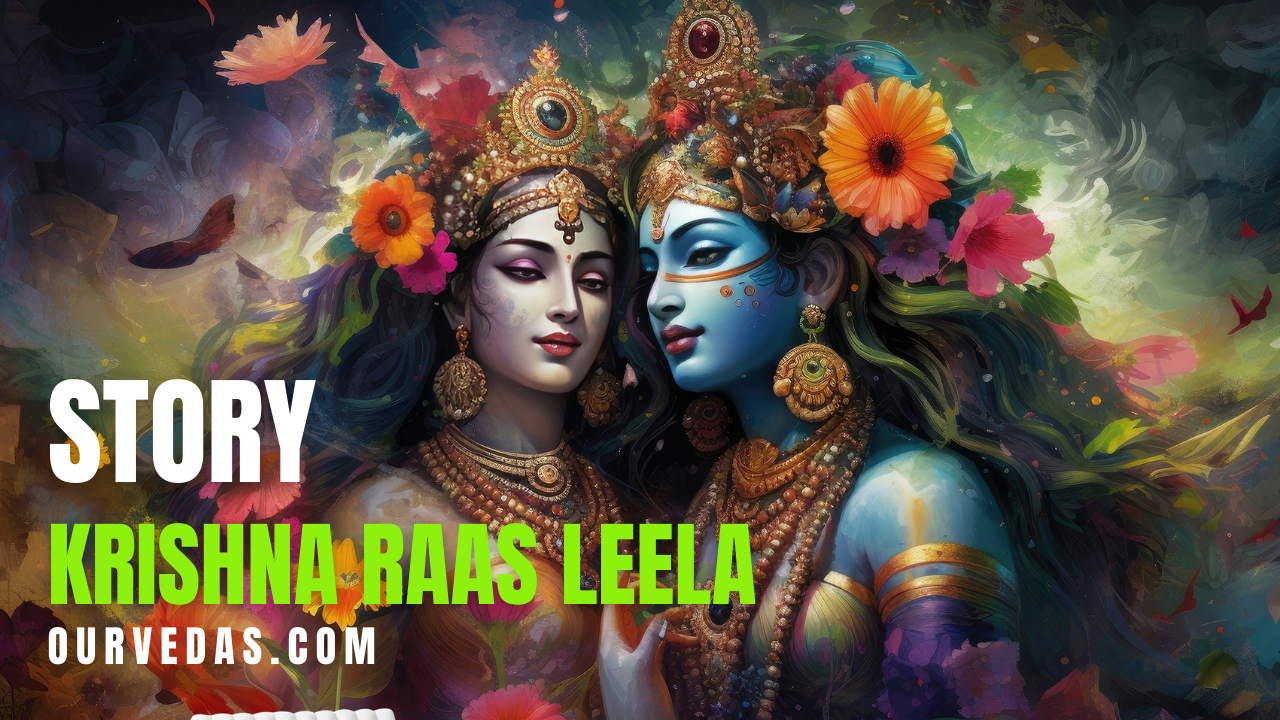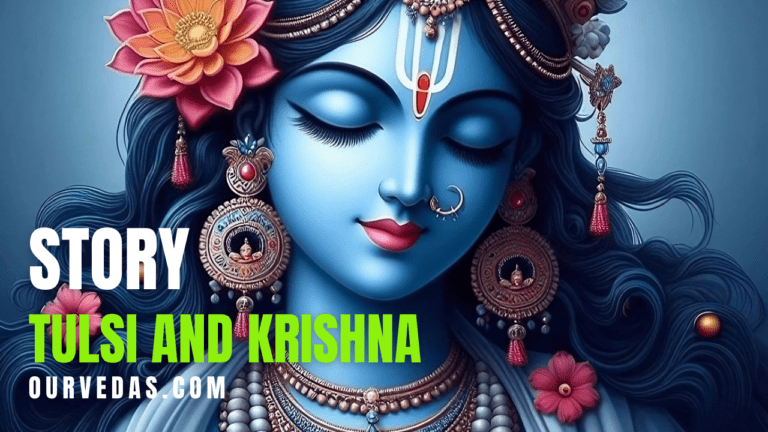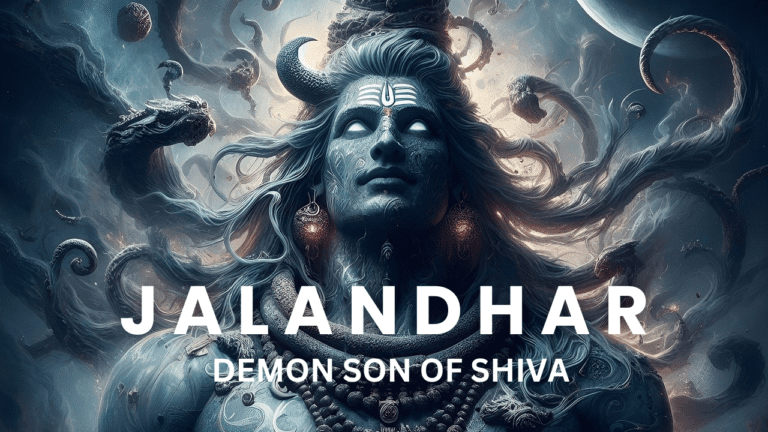The land of Gokul and Vrindavan is rich with timeless mysteries and tales. There are many stories of Lord Krishna, but there’s nothing as mesmerizing as Krishna Raas Leela story. Raas Leela is not just a celebration; it’s the love, devotion, and heartfelt emotions of the Gopis.
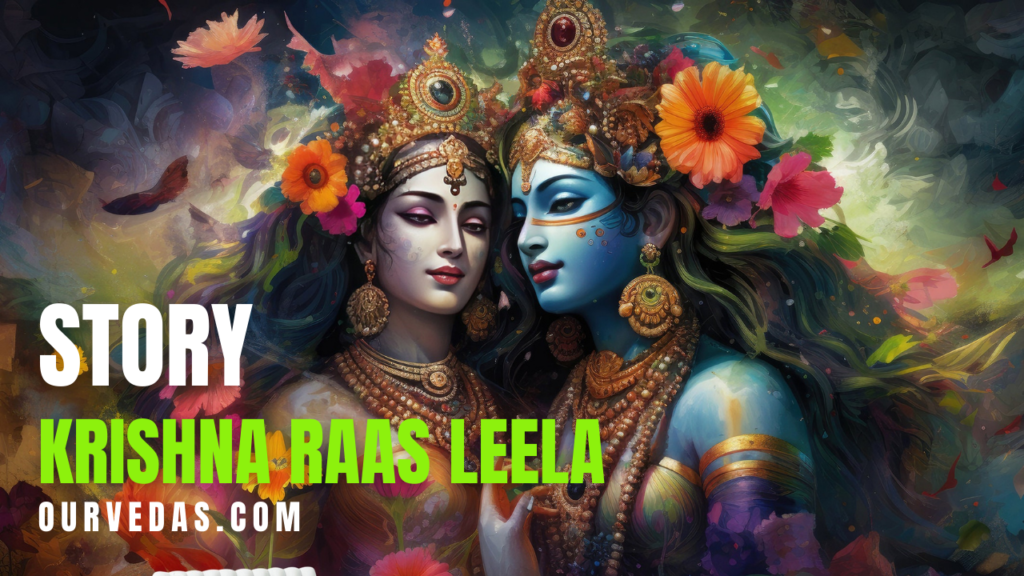
In this article, we will try to understand the origins of these tales, explore their relevance across different cultures, and witness how even deities like Shiva were drawn in Krishna’s plays.
Without wasting any further time, let’s dive into Krishna’s majestic tales that transcend time itself!
Krishna Raas Leela Story
Gokul and Vrindavan are two important places where Krishna has spent his childhood. In Gokul, Krishna’s childhood unfolds with playful antics like theft of butter and killing demons.
As he grows, the entire village of Gokul shifts to Vrindavan due to frequent attacks by demons in Gokul. Vrindavan was a beautiful place with lush green forests around the river Yamuna.
It was in Vrindavan that the beautiful stories of Raas Leela unfolded. Vrindavan becomes the center stage for Krishna’s heartwarming performances filled with devotion and joy. His flute used to enchant all the villagers. The lush green surroundings amplified every note of the flute, and even all the animals and birds gathered around him.
As the villagers flocked, their eyes filled with tears, and their hearts overflowed with ecstasy. Gopis also admired Lord Krishna’s flute, and they became fond of Krishna. They used to adore Krishna, secretly wishing to listen to his flute.
It is said that these Gopis were incarnations of many saints and demigods who had performed severe penance for lifetimes to be around Lord Vishnu. When Vishnu took Krishna’s avatar, they also took avatars as Gopis.
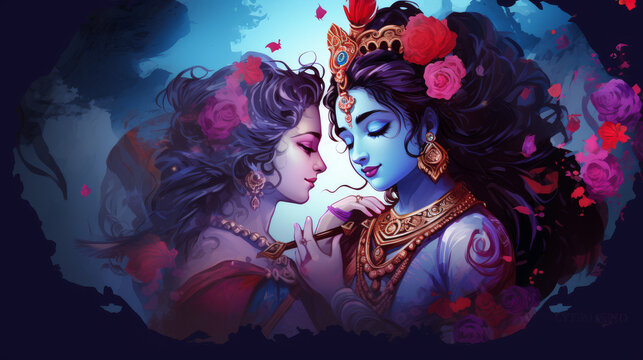
As Gopis, they fell in intense love with Krishna. For all day they used to crave Krishna playing his flute secretly. Their love was not just romantic; it transcended human emotions and spoke to the spiritual longing for eternal connection with the Divine. But what’s hidden from Krishna! He knew the condition of Gopi’s heart.
The Beginning of the Raas Leela
One fine night, under a luminous moonlit sky, Krishna unleashed his maya(magic). He played his flute in such a manner that its notes only reached Gopis. They were draw to him on the banks of Yamuna. With every note of Krishna’s flute, joy and ecstasy unleashed.
Gopis came running towards him. Their feet started moving with joy. Krishna took innumerable forms and danced with each Gopi. As they danced together on the banks of the Yamuna River, the world around them faded away.
It became a moment when time stood still. The atmosphere crackled with excitement as Gopis swayed gracefully alongside their beloved Kanha.
This was just the beginning. It laid the foundation for countless Raas Leela nights. So is the maya of Krishna that the notes of his flute still resonate in the streets of Vrindavan. There is a temple in Vrindavan where it’s prohibited to visit at night. It’s said that Gopis and Krishna still play Raas Leela at that temple.
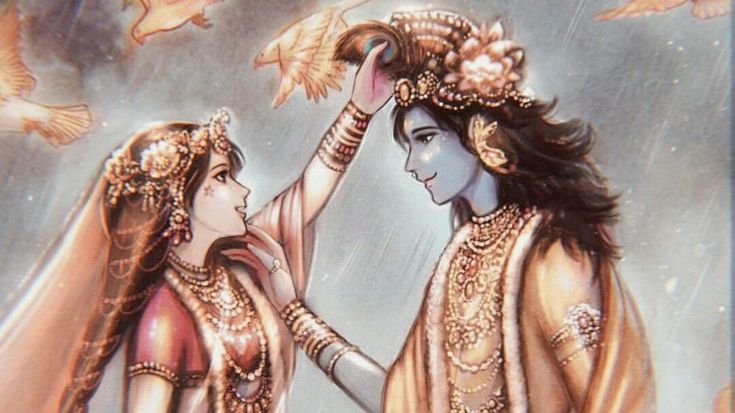
These tales make one think that Gokul and Vrindavan are not merely pieces of land; they are the very places blessed by the feet of Gopis and Krishna.
Shiva decided to come to Raas Leela.
Krishna’s Raas Leela was so attractive and ecstatic that every deity wanted to be a part of it. Among the man divine entities drawn towards the mesmerizing performances of Lord Krishna, one figure stands out—Lord Shiva. She couldn’t resist being drawn to the banks of Yamuna.
Lord Shiva is a widely followed deity. Among the trinity of Brahma, Vishnu, and Mahesh(another name for Shiva), Shiva represents transformation or destruction.
Lord Shiva spends most of his time in deep meditation. He embodies the ideal balance between asceticism and worldly engagement. When his meditations reach advanced stages, he dances in ecstasy. Inspired by this, Shiva is depicted as a cosmic dancer (Nataraja).
He is the god of Masaan(cremation grounds). He symbolizes that this body is temporary and that we must strive for spiritual experiences and higher states of consciousness.
Read: Gajasura Shiva story.
The Pull of Krishna’s Raas Leela
One Raas Leela night, when Krishna was at his rhythmic peak, and the melodies of his divine flute reached Shiva’s ears, Shiva couldn’t restrain himself. Shiva felt an irresistible urge to witness the Raas Leela.
Shiva disguised himself, took the form of a Gopi, and secretly entered the Raas Leela grounds. Lord Krishna, knowing everything, played his flute in a manner that Shiva lost himself in the melody and started dancing irresistibly. Shiva was so lost into the dance that he forgot to maintain his veil and came to his original form. Both the deities recognized each other and smiled.
Shiva’s presence at the Raas Leela holds crucial lessons for devotees. It portrays the idea that various paths can lead to ultimate liberation. Whether one’s approach is bhakti (devotion) or meditation, ultimately leads to the same divine source.
Just as Shiva absorbed Krishna’s Leela, transcending his usual meditative state, the story teaches that spiritual practices can take many forms.
Popularity of Raas Leela
To this day, Raas Leela is celebrated all over India. These events inspire various dramas played on Krishna’s life. Many temples celebrate it in their unique ways.
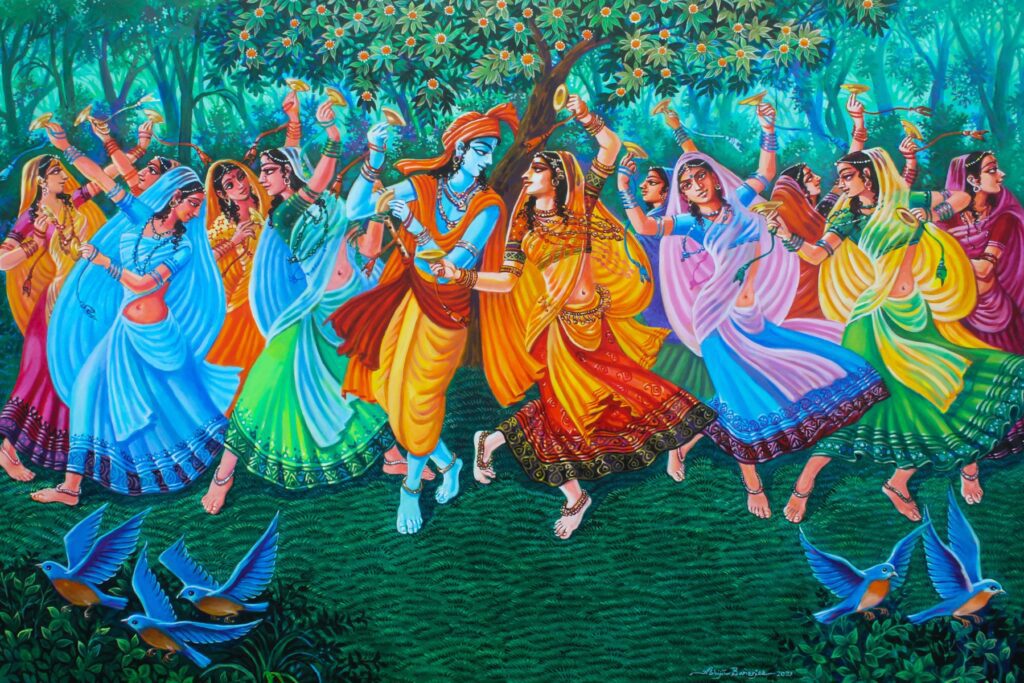
The popularity of Raas Leela transcends geographical boundaries. Performances are staged in rural villages and urban theatres during festive occasions like Janmashtami and Holi. Devotees often gather in large numbers to witness these lively dances, creating an atmosphere rich with energy and passion.
The essence of Raslila is deeply rooted in bhakti (devotion) and surrender. It becomes a pathway toward experiencing blissful communion with Krishna himself.
What is Raslila/Raas Leela?
Raslila is an expression of devotion and divine play. It showcases the enchanting relationship between Lord Krishna and his beloved Gopis. These performances are not merely artistic; they have deep spiritual significance.
Each Raslila is a story of love, longing, and bhakti of lifetimes.
FAQs
Who were Gopis?
The Gopis are celestial female beings associated with Lord Krishna’s life, particularly his childhood and youthful days in the towns of Gokul and Vrindavan. They are often depicted as cowherd girls wh are deeply devoted to Krishna and share a special bond with him.
They are said to be incarnations of various celestial beings, demigods, and saints who had performed intense penance to be close to Lord Vishnu. When Krishna took human form, they manifest d as Gopis to participate in his divine play, known as Raas Leela.
Why Krishna left Gopis?
Krishna has always highlighted the importance of performing duty. As an incarnation of Vishnu, he had greater things to do. It was his duty to meet thousands of devotees waiting for him since lifetimes. Furthermore, he had to play a greater role in Dwarka and Mahabharata.
Gopis had their own lives and families. So, they also had a duty towards them. When deemed right, Krishna moved on to take on greater responsibilities.
Additionally, Krishna’s actions are viewed as part of his larger divine play. His leaving allows the Gopis to deepen their devotion and understanding of the nature of love.
What happened to Gopis when Krishna left them?
Krishna’s departure is a tearful moment in the Raas Leela stories. The Gopis had immersed themselves in deep devotion for Krishna. They experienced profound sorrow and longing in his absence.
The Gopis felt a void in their hearts as their lives revolved around Krishna. They were left, yearning for his return, filled with emotions of longing and devotion.
In their anguish, the Gopis would often sing and call out to Krishna, expressing their feelings through heartfelt songs and prayers.
Read: Tulsi and Krishna Story

